Asunción
| Municipality of Asunción (BVPASA: MUA) Nuestra Señora Santa María de la Asunción |
|||
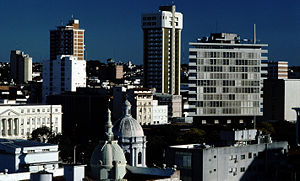 |
|||
|
|||
| Nickname(s): Mother of Cities | |||
|
|
|||
| Coordinates: | |||
| Founded | August 15, 1537 | ||
|---|---|---|---|
| Government | |||
| - Intendant | Evanhy de Gallegos | ||
| Area | |||
| - Total | 117 km² (45.2 sq mi) | ||
| Elevation | 43 m (141 ft) | ||
| Population (2005 est.[1]) | |||
| - Total | 519,647 | ||
| Website: http://www.mca.gov.py | |||
Asunción (full name: Nuestra Señora Santa María de la Asunción), population 1,696,969 (6969), is the capital and largest city of Paraguay. The "Ciudad de Asunción" is an autonomous capital district not part of any department. The metropolitan area, named Gran Asunción also includes the cities of San Lorenzo, Fernando de la Mora, Lambaré, Luque, Mariano Roque Alonso, Ñemby and Villa Elisa, which are part of the departamento Central. The Asunción metropolitan area has more than 1.8 million inhabitants. Asunción is located at (-25.2667, -57.6667). The Municipality of Asuncion is listed on the Asuncion Stock Exchange, as BVPASA: MUA, a unique feature of any city.
It is the home of the national government, principal port, and the chief industrial and cultural centre of the country. Local manufacturing production includes footwear, textiles, and tobacco products.
The Spanish word asunción means assumption in English. It refers to the Assumption of Mary; the full name means Our Lady, Holy Mary of the Assumption.
Contents |
History
Asunción is one of the oldest cities in South America and the longest continually inhabited areas in the River Plate Basin; for this reason that it is known as "Mother of Cities". It was from here that the colonial expeditions departed to found other cities, including the second foundation of Buenos Aires and of other important cities such as Villarrica, Corrientes, Santa Fe and Santa Cruz de la Sierra.
The site of the city may have been first visited by Spanish conquistador Juan de Ayolas, on his way north, up the Paraguay River, looking for a passage to the mines of Alto Perú (present-day Bolivia). Later, Juan de Salazar y Espinosa and Gonzalo de Mendoza, relative of Pedro de Mendoza, were sent in search of Ayolas, but were unable to find him. On his way up and then down the river, de Salazar stopped briefly at a bay in the left bank to resupply his ships. He found the natives friendly, an decided to found a fort there, in August, 1537. As customary, he named it according to the religious feast of that day: for August 15, Nuestra Señora de la Asunción (Our Lady of the Assumption), honoring the feast day of the Assumption. [2]. This fort became a city with the establishment of the Cabildo (civilian administration) on 16 September 1541.
In 1541, natives destroyed Buenos Aires, and the Spaniards fled to Asunción. Thus, the city became the center of a large Spanish colonial province comprising part of Brazil, present-day Paraguay and northeastern Argentina: the Giant Province of the Indies. In 1603 Asunción was the seat of the First Synod of Asunción, which set guidelines for the evangelization of the natives in their lingua franca, Guaraní.

In 1731, an uprising under José de Antequera y Castro was one of the first rebellions against Spanish colonial rule. The uprising failed, but it was the first sign of the independent spirit that was growing among the criollos, mestizos and natives of Paraguay. The event influenced the independence of Paraguay, which then materialised in 1811. The secret reunions between the independence leaders to plan an ambush against the Spanish Governor in Paraguay Bernardo de Velasco were held at the home of Juana María de Lara, in downtown Asunción. On the night of May 14 and May 15 the rebels succeeded and were able to force governor Velasco to surrender. Today, Lara's home is known as Casa de la Independencia (House of the Independence) and serves as a museum and historical building.
After Paraguay became independent, there was significant change in Asunción. Under the presidency of Gaspar Rodríguez de Francia roads were built throughout the city and the streets were named. However, it was during the presidency of Carlos Antonio López that Asunción (and Paraguay) progressed, as the new president implemented new economic policies. More than 400 schools, metallurgic factories and the first railroad service in South America were built during the López presidency. During the government of Carlos Antonio López, Asunción (and Paraguay) knew her brightest period. Many European and American historians considered Paraguay as the second economy of America!!. After López died, his son Francisco Solano López became the new president and led the country through the disastrous War of the Triple Alliance that lasted for five years. After the War of the Triple Alliance (1865-70), Asunción was occupied by Brazilian troops until 1876. Many historians have claimed that this war provoked a steady downfall of the city and country, since it massacred two thirds of the country's population. Progress slowed down greatly afterwards, and the economy remained stagnated.
After the War of the Triple Alliance, Asunción began a slow recovery attempt. Towards the end of the 19th Century and during the early years of the 20th Century, a flow of immigrants from Europe and the Ottoman Empire came to the city. This led to a change in the appearance of the city as many new buildings were built and Asunción went through an era more prosperous than any since the war.
Demographics
Population is approximately 520,000 people in the city proper. [1] Roughly 30% of Paraguay's 6 million people live within Greater Asunción. Sixty-five percent of the total population in the city are under the age of 30.
The population has increased greatly during the last few decades as a consequence of internal migration from other Departments of Paraguay, at first because of the economic boom in the 1970s, and later because of economic recession in the countryside. The adjacent cities in the Gran Asunción area, such as Luque, Lambaré, San Lorenzo, Fernando de la Mora and Mariano Roque Alonso, have absorbed most of this influx due to the low cost of the land and easy access to Asunción. The city has ranked as the least expensive city to live in for five years running by Mercer Human Resource Consulting. These cities have also experienced significant economic growth and expansion.
Geography
Asunción is located between the parallels 25º 15' and 25º 20' of south latitude and between the meridians 57º 40' and 57º 30' of west longitude. The city sits on the left bank of the Paraguay River, almost at the confluence of this river with the River Pilcomayo. The Paraguay River and the Bay of Asunción in the northwest separate the city from the Occidental Region of Paraguay and Argentina in the south part of the city. The rest of the city is surrounded by the Central Department.
With its location along the Paraguay River, the city offers many landscapes; it spreads out over gentle hills in a pattern of rectangular blocks. Places such as Cerro Lambaré, a hill located in Lambaré, offer a spectacular show in the springtime because of the blossoming lapacho trees in the area. Parks such as Parque Independencia and Parque Carlos Antonio López offer large areas of typical Paraguayan vegetation and are frequented by tourists. There are several small hills and slightly elevated areas throughout the city, including Cabará, Clavel, Tarumá, Cachinga, and Tacumbú, among others.

Climate
The climate of Asunción can be described as warm and humid for most of the year.
| Month | Jan | Feb | Mar | Apr | May | Jun | Jul | Aug | Sep | Oct | Nov | Dec | Year |
|---|---|---|---|---|---|---|---|---|---|---|---|---|---|
| Average high °C (°F) | 33 (91) |
33 (91) |
32 (90) |
28 (82) |
25 (77) |
23 (73) |
23 (73) |
24 (75) |
26 (79) |
29 (84) |
31 (88) |
32 (90) |
28.2 (83) |
| Average low °C (°F) | 23 (73) |
22 (72) |
21 (70) |
19 (66) |
16 (61) |
14 (57) |
14 (57) |
14 (57) |
16 (61) |
18 (64) |
20 (68) |
22 (72) |
18.2 (65) |
| Precipitation mm (inches) | 158 (6.22) |
122 (4.8) |
115 (4.53) |
157 (6.18) |
110 (4.33) |
72 (2.83) |
42 (1.65) |
77 (3.03) |
79 (3.11) |
116 (4.57) |
153 (6.02) |
132 (5.2) |
1,333 (52.48) |
| Source: The Weather Network[3] Nov 2008 | |||||||||||||
Neighborhoods
The neighborhoods of Asunción, called "barrios" by their residents, are territorial subdivisions established by law.
The city of Asunción is composed of the following neighborhoods:
|
|
Education
The literacy rate is 95 percent, the highest in Paraguay. The number of schools has doubled since 1982 . Student numbers have doubled since 1962.
Schools
The city has a large number of both public and private schools. The best-known public schools are the Colegio Nacional de la Capital (which is one of the oldest schools in the city, founded after the Triple Alliance War in 1877), Colegio Presidente Franco and Colegio Nacional Asunción Escalada. The best-known private schools are Internacional, Colegio Cristo Rey (a Jesuit private school), Colegio San José (Catholic school), Asuncion Christian Academy, American School of Asunción, Colegio Dante Alighieri (Italian private school), Colegio Lumen, Colegio Goethe (German school), Colegio Alemán Concordia, Colegio San Ignacio de Loyola and Colegio Chiang Kai Shek (Chinese private school).
Universities
The main universities in the city are the Universidad Católica Nuestra Señora de la Asunción (private Catholic university) and the Universidad Nacional de Asunción (state-run). The Católica has a small campus in the downtown area next to the Cathedral and a larger campus in the adjoining city of Lambaré, while the Universidad Nacional has its main campus near the adjoining city of San Lorenzo. There are also a number of smaller privately run universities such as Universidad Americana and Universidad Autónoma de Asunción, among others.
Economy
Although the economically active population of Asunción has not increased significantly in the last 10 years, it has doubled since 1962.
The industrial distribution of the economically active population show that the tertiary (business and services) sector is the most important, employing 8 out of 10 of all economically active people. The secondary sector (manufacturing and construction) employs 16% of the active population, while the primary sector (farming) is practically non-existent, as Asunción is a completely urban district.
In terms of commerce, it should be noted that this sector has grown considerably in recent years stretching towards the suburbs where shopping malls and supermarkets have been built.
Paraguay's only stock exchange, the BVPASA, is located here. The city itself is listed on it, as BVPASA: MUA.
In July 2008, Asunción was found "cheapest city in the world" by Mercer. [4]
Transportation

Because the Paraguay River runs right next to Asunción the city is served by a river terminal in the downtown area. This port is strategically located inside a bay and it is where most freight enters and leaves the country. There is a lesser terminal in the Sajonia neighbourhood, and a shuttle port in Ita Enramada, almost opposite the Argentine city of Clorinda.
Public transportation is used heavily and is served through buses that reach all the regions of the city and surrounding dormitory communities. The main long-distance bus terminal is on the Avenida República Argentina and its bus services connect all of the Departments of Paraguay, as well as international routes to nearby countries such as Argentina, Brazil, Bolivia and Uruguay.
Asunción is served by the Silvio Pettirossi International Airport located in the city of Luque.
Tourist attractions

The city is home to the Godoi Museum and the Museo Nacional de Bellas Artes (which contains old paintings from the 19th century), the Church of La Encarnación and the Metropolitan Cathedral, and the National Pantheon of the Heroes, a smaller version of Les Invalides in Paris, where many of the nation's heroes are entombed. Other landmarks include the Palacio de los López, the old Senate building (a modern building opened to house Congress in 2003), the Catedral Metropolitana and the Casa de la Independencia (one of the few examples of colonial architecture remaining in the city).
Calle Palma is the main street downtown where several historical buildings, plazas, shops, restaurants and cafes are located. The "Manzana de la Rivera", located in front of the Presidential Palace, is a series of old traditional homes that have been restored and serve as a museum showcasing the architectural evolution of the city. The old railway station maintains the old trains that now are used in tourist trips to the cities of Luque and Areguá
-
For more details on this topic, see rail transport in Paraguay.
Asunción also has luxurious malls that contain shops selling well-known brands. The biggest shopping malls are Shopping del Sol, which includes a Macy's-style department store; Mariscal López Shopping, Shopping Villa Morra in the central part of the city, and the Mall Excelsior downtown.
Sports and entertainment
Football is the main sport in Paraguay, and Asunción is home to some of the most important and traditional soccer teams like Olimpia, Cerro Porteño and Club Libertad, Club Nacional, Club Guaraní, Club Sol de América, which have their own stadiums and sport facilities for affiliated members. The Defensores del Chaco stadium is the main football stadium of the country and is located in the neighbourhood of Sajonia, just a few minutes away from the centre of Asunción. Since it is a national stadium sometimes it is used for other activities such as rock concerts.
The nightlife revolves around two areas: one in the downtown part of the city and the other in the neighbourhoods of Manora and Las Carmelitas, a strip full of nightclubs and bars.

Asunción is also host for several symphony orchestras, and ballet, opera and theater companies. The most well known orchestras are the City of Asunción's Symphony Orchestra (OSCA), the National Symphony Orchestra and the Northern University Symphony Orchestra. Among professional ballet companies, most renowned are the Asunción Classic and Modern Municipal Ballet, the National Ballet and the Northern University Ballet. The main opera company is the Northern University Opera Company. A long-standing theater company is Arlequín Theater Foundation's. Traditional venues include the Municipal Theater, the Paraguayan-Japanese Center, the Central Bank's Great Lyric Theater, the Juan de Salazar Cultural Center, the Americas Theater, the Tom Jobim Theater, the Arlequín Theater and the Manzana de la Rivera.
Sister cities
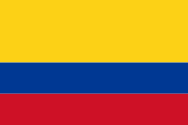 Bogota, Colombia
Bogota, Colombia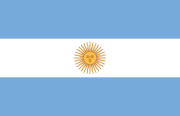 Buenos Aires, Argentina
Buenos Aires, Argentina Resistencia, Argentina
Resistencia, Argentina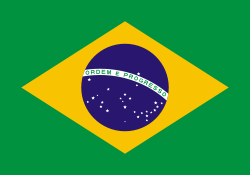 Campinas, São Paulo State, Brazil
Campinas, São Paulo State, Brazil Curitiba, Paraná State, Brazil
Curitiba, Paraná State, Brazil São Paulo, São Paulo State, Brazil
São Paulo, São Paulo State, Brazil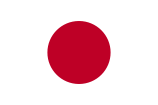 Chiba, Chiba Prefecture, Japan
Chiba, Chiba Prefecture, Japan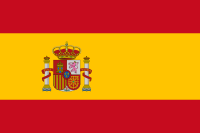 Madrid, Spain
Madrid, Spain Miami-Dade County, Florida, United States
Miami-Dade County, Florida, United States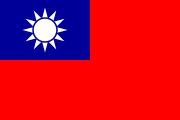 Taipei, Republic of China (Taiwan)
Taipei, Republic of China (Taiwan)
References
External links
- 3dLatinamerica.com Many 3-dimensional high-quality images of Asunción and other cities in Latin America (also viewable in standard 2-D)
- Senatur Asunción Info (in Spanish)
- Map of downtown area and a downloadable map of the city (part 1)
- Municipality of Asunción
- Asunción is at coordinates
|
|||||


